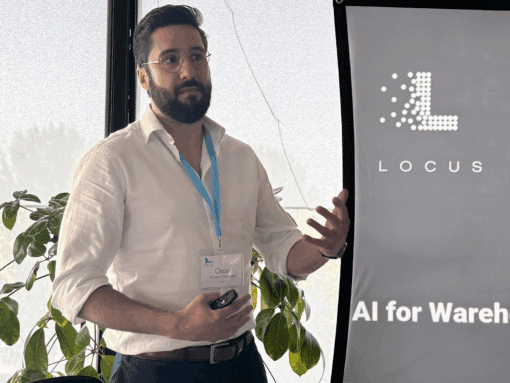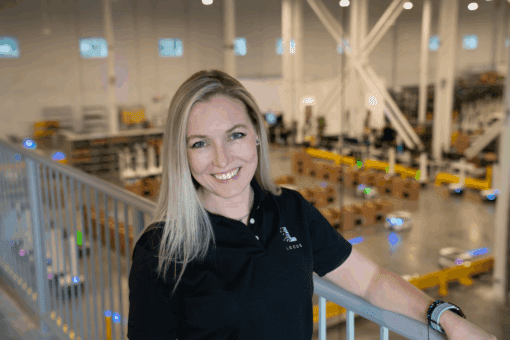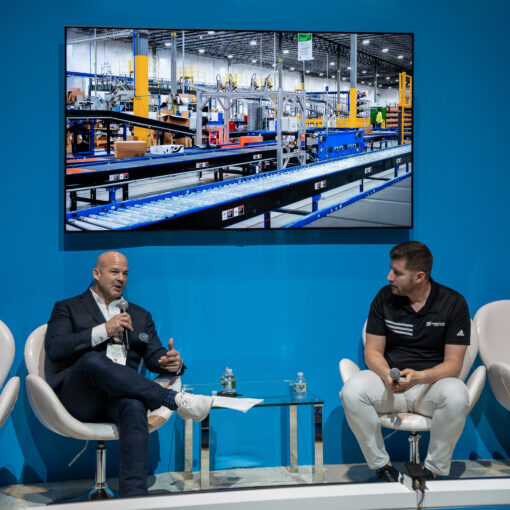WP: How to achieve 400 UPH with Locus Fast Pick
WP: How to achieve 400 UPH with Locus Fast Pick Download Now!
Real AI for Real Warehouses: Why Physical, Trustworthy, and Holistic AI Matters Now
Mary Hart, Sr. Content Marketing Manager

Artificial intelligence (AI) in the warehouse is no longer a concept reserved for future planning or academic research. It’s here, and it’s delivering results, but not all AI is created equal. As Oscar Mendez, Head of AI and Data Science at Locus Robotics, shared in our recent Warehouse Automation Matters podcast episode, the real value of warehouse AI comes from how it’s designed, deployed, and measured.
"You're not just asking 'does the robot do the thing?'" Mendez told me. "You're asking, 'does the thing make sense?'"
That distinction is central to how Locus approaches AI. It’s not just about whether a system performs a task. It’s also about whether that task improves throughput, saves labor, and adds real business value.
AI in the Warehouse: From Cool Demos to Real-World ROI
On the podcast, Mendez shared how his team frames AI not as a collection of clever capabilities, but as a system designed to deliver business value from day one. That means solving real problems in real environments, not building theoretical models and hoping they scale later.
Locus focuses on three traits in every AI solution:
- Physical: AI that’s embedded in the physical warehouse, guiding robots, acknowledging and avoiding material handling equipment (MHEs), and adapting to unpredictable environments.
- Trustworthy: AI that can explain its decisions, so managers and associates trust and act on them.
- Holistic: AI that doesn’t just optimize a single robot or task but orchestrates the warehouse as a system from order input to throughput.
"We’re not building AI to pass a benchmark," Mendez said. "We’re building AI that understands the warehouse and makes it better."
Scaling AI with Purpose: The ROI Ladder
One of the most compelling parts of our conversation was Mendez's idea of the "AI complexity ladder."
Rather than trying to leap straight into robotics foundation models, Locus builds upward in stages. Each stage solves a problem, delivers ROI, and unlocks the next layer of functionality. For example:
- Object detection helps bots avoid MHEs
- That stage enables better semantic segmentation
- Which then supports smarter navigation
- Which then lays the foundation for full orchestration of labor and bots
"Each rung on the ladder adds value on its own," Mendez explained. "You don’t have to wait five years to see a return."
Why Data and Domain Expertise Matter
AI is only as good as the data it learns from, and Locus has more of it than most companies in the field:
- 30 GB of robot data generated per second
- 15,000+ robots across 350+ cities
- Over 100,000 human-to-robot collaborators
- 5 billion+ units picked
That sheer scale of real-world data allows Locus to build models that actually work in brownfield warehouses with live traffic, seasonal surges, and human workers everywhere.
But without understanding the context of the data, the data means nothing. "You need domain expertise to know what problems to solve," Mendez said. That’s why the Locus AI team doesn’t just build models; they build warehouse-first solutions.
The Human Factor: Explainability and Trust
As AI becomes more embedded in warehouse workflows, trust becomes non-negotiable. If managers don’t understand why a system made a decision, they won’t use it, and that’s why Locus prioritizes explainability.
Mendez outlined three levels of explainability:
- Interpretable: The AI’s logic is simple enough for humans to grasp.
- Externally explainable: Tools can "poke" the AI to show what influenced a decision.
- Self-explainable: The AI itself can narrate its behavior in real time.
That last one is what Mendez’s team is working toward in the form of robots that offer live commentary in plain language. Imagine a robot saying, "I'm rerouting due to congestion near Aisle 7" or "Picking up slack where labor is light."
System-Directed Labor: Humans in the Loop
One of the clearest examples of Locus’ AI philosophy in action is system-directed labor (SDL). At the end of each pick, the robot guides the associate to their next task, so there’s no more wandering the floor or searching for the next robot.
"It reduces walking, speeds up onboarding, and increases throughput," Mendez said. "And it’s a great example of our AI being physical, trustworthy, and holistic all at once."
What It All Adds Up To
AI doesn’t need to be mysterious. It needs to be useful. At Locus, that means:
- Building AI for the warehouse, not the lab
- Measuring success in throughput and labor savings
- Designing systems that scale from atomic models to full orchestration
- And above all, ensuring customers see value today, not years from now
Listen to the full conversation with Oscar Mendez on Warehouse Automation Matters to hear how real AI is already transforming real warehouses.




